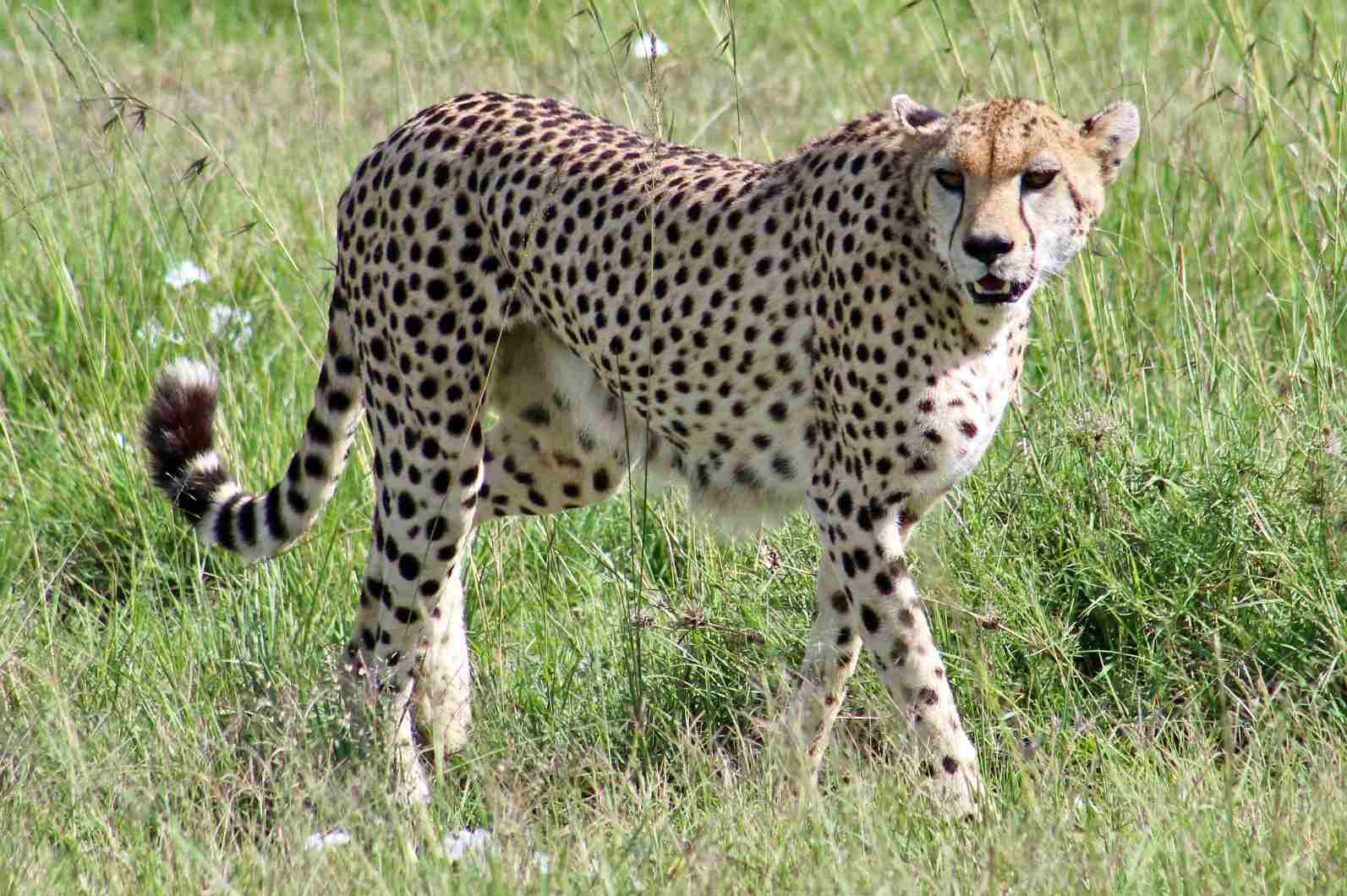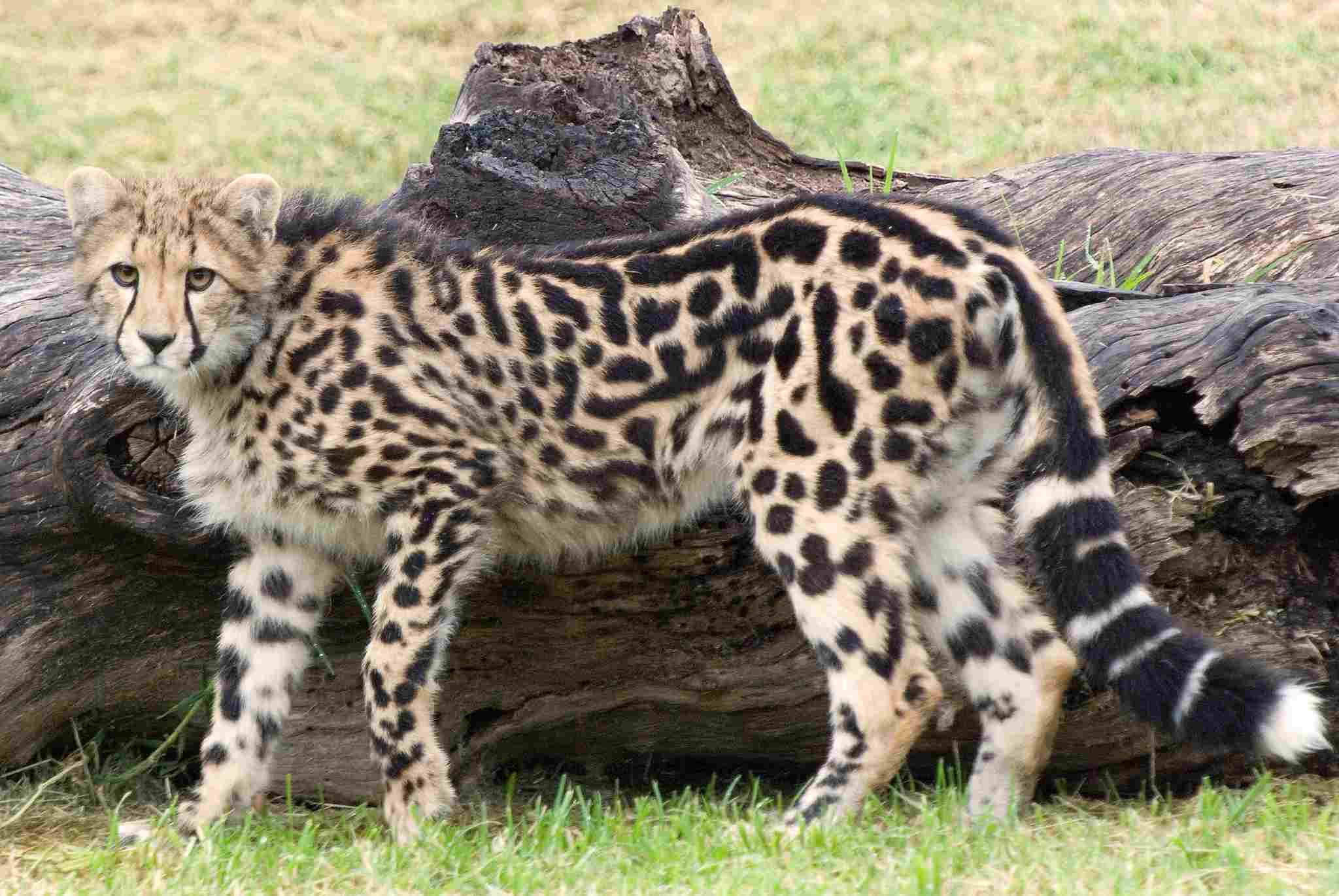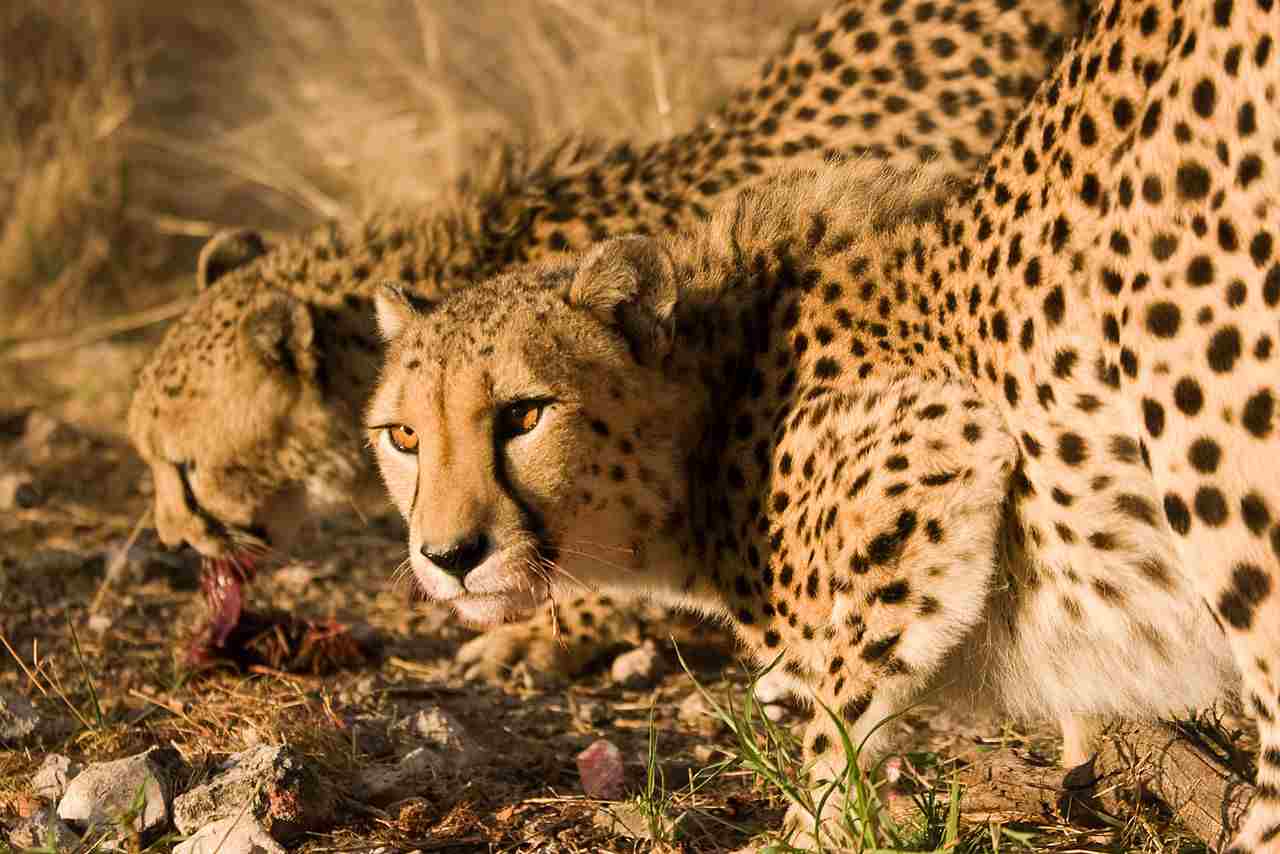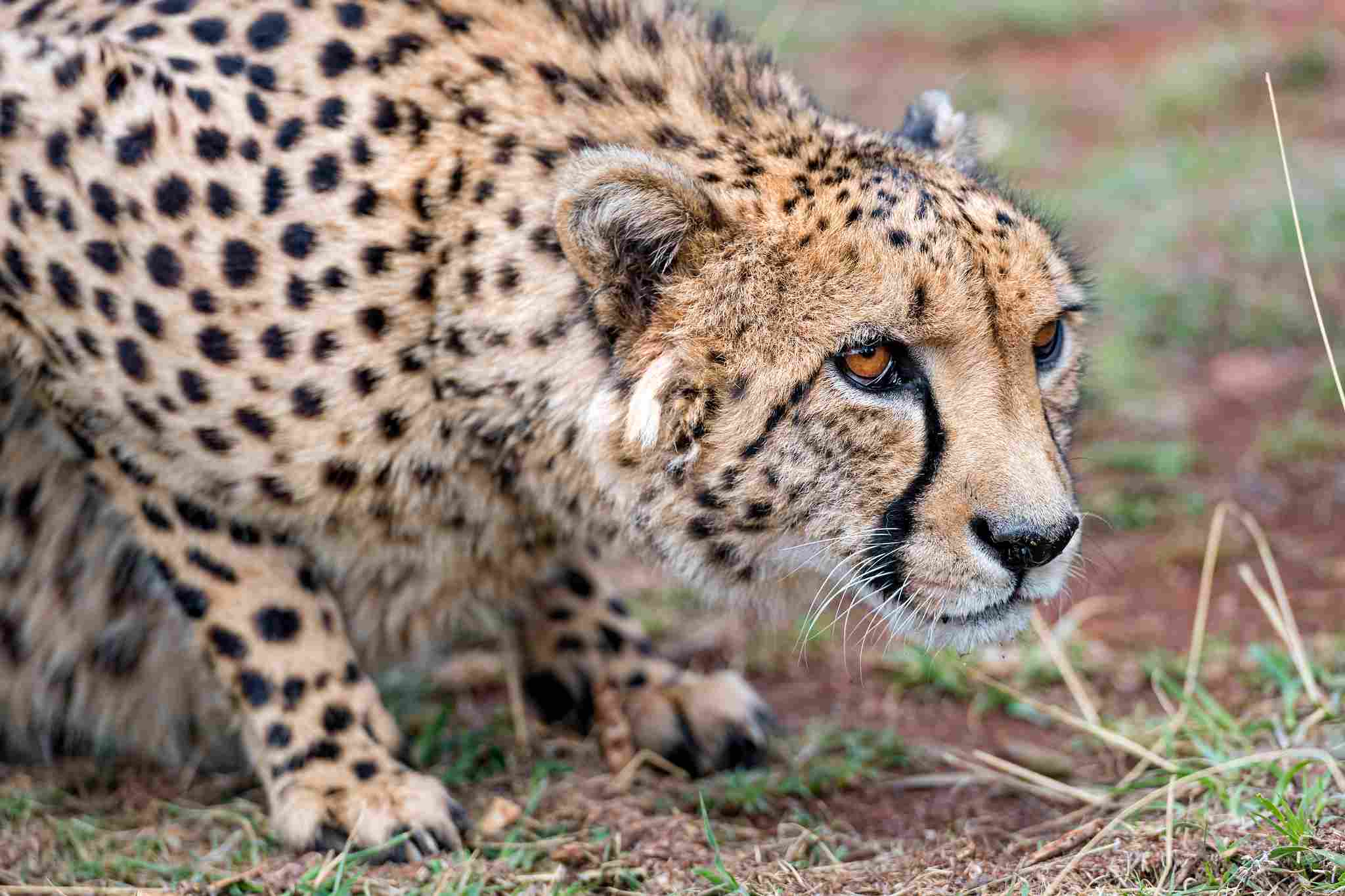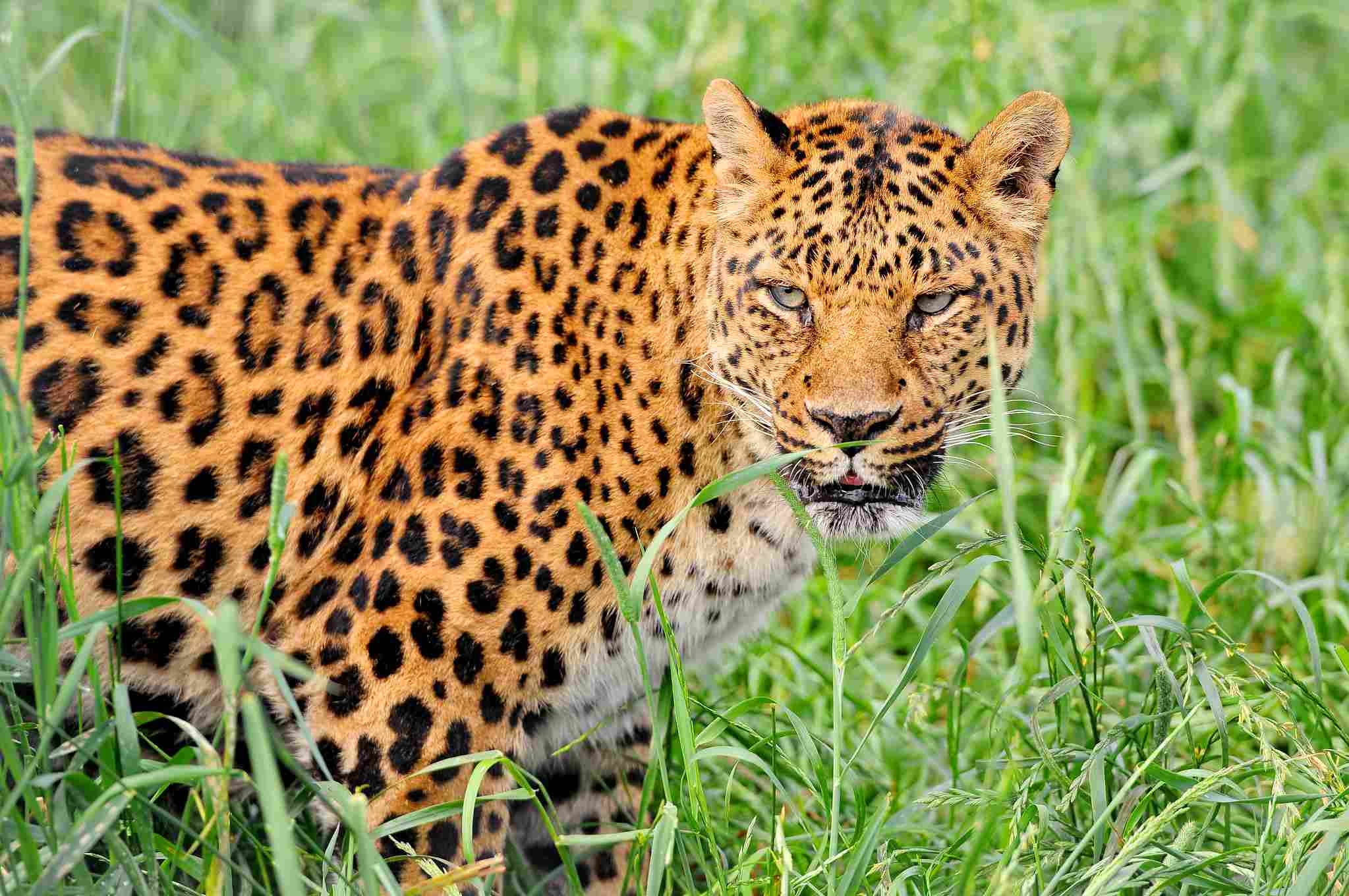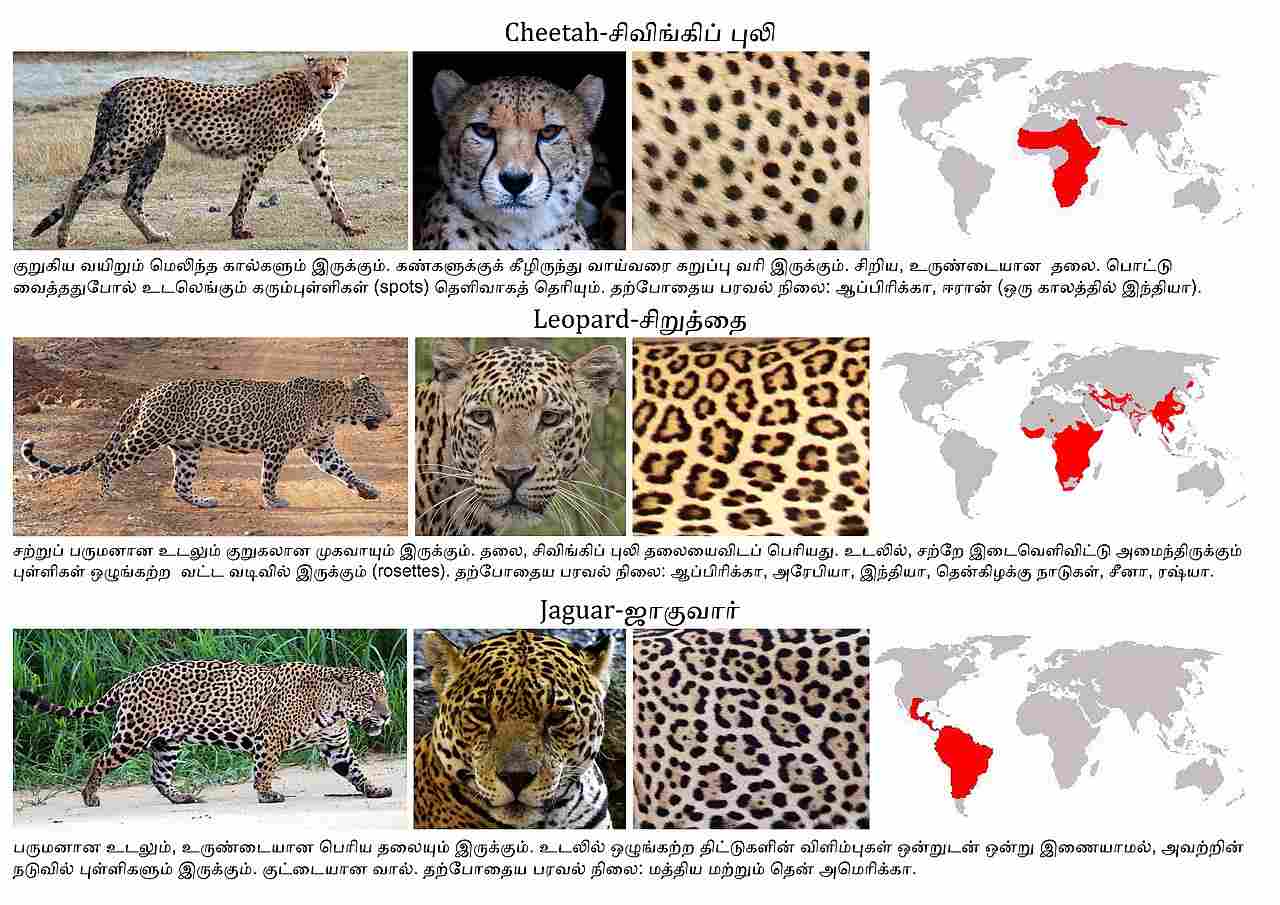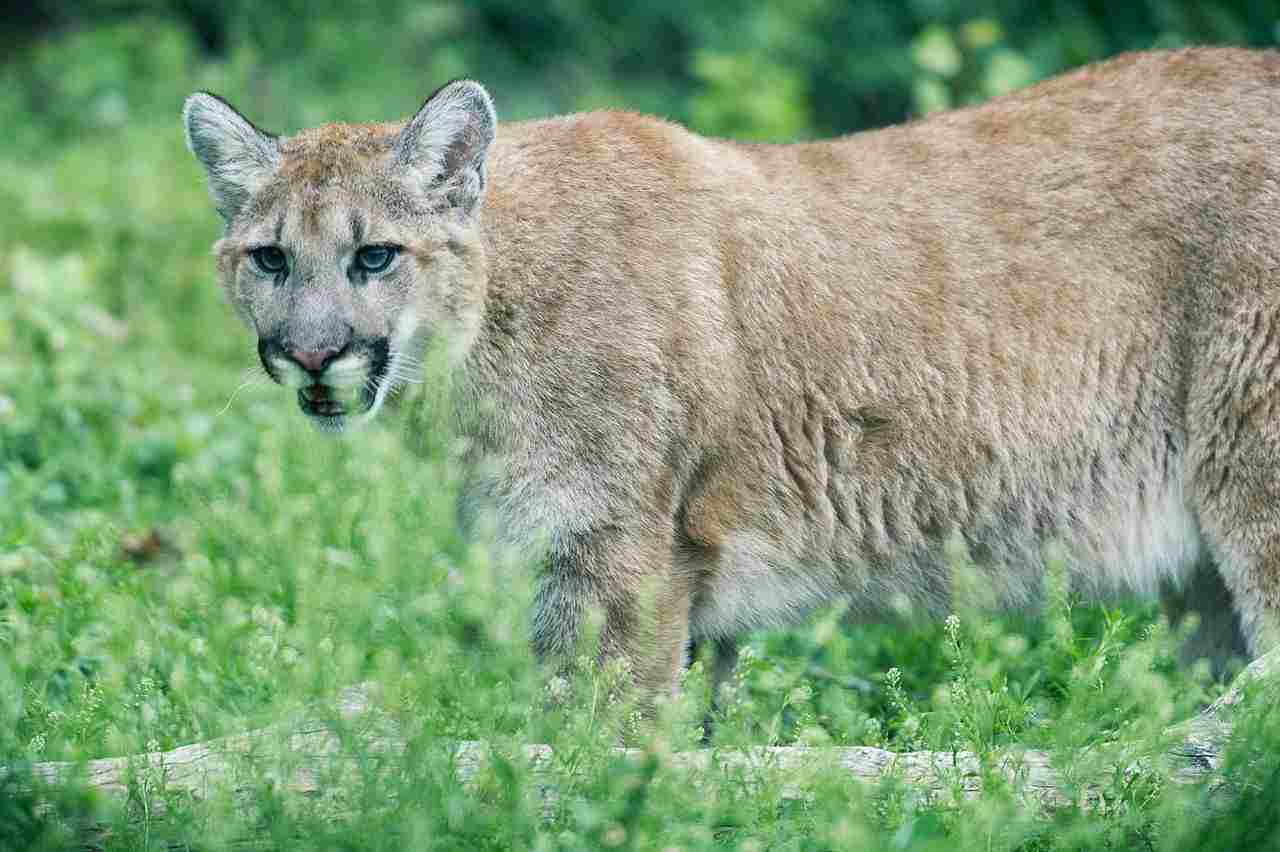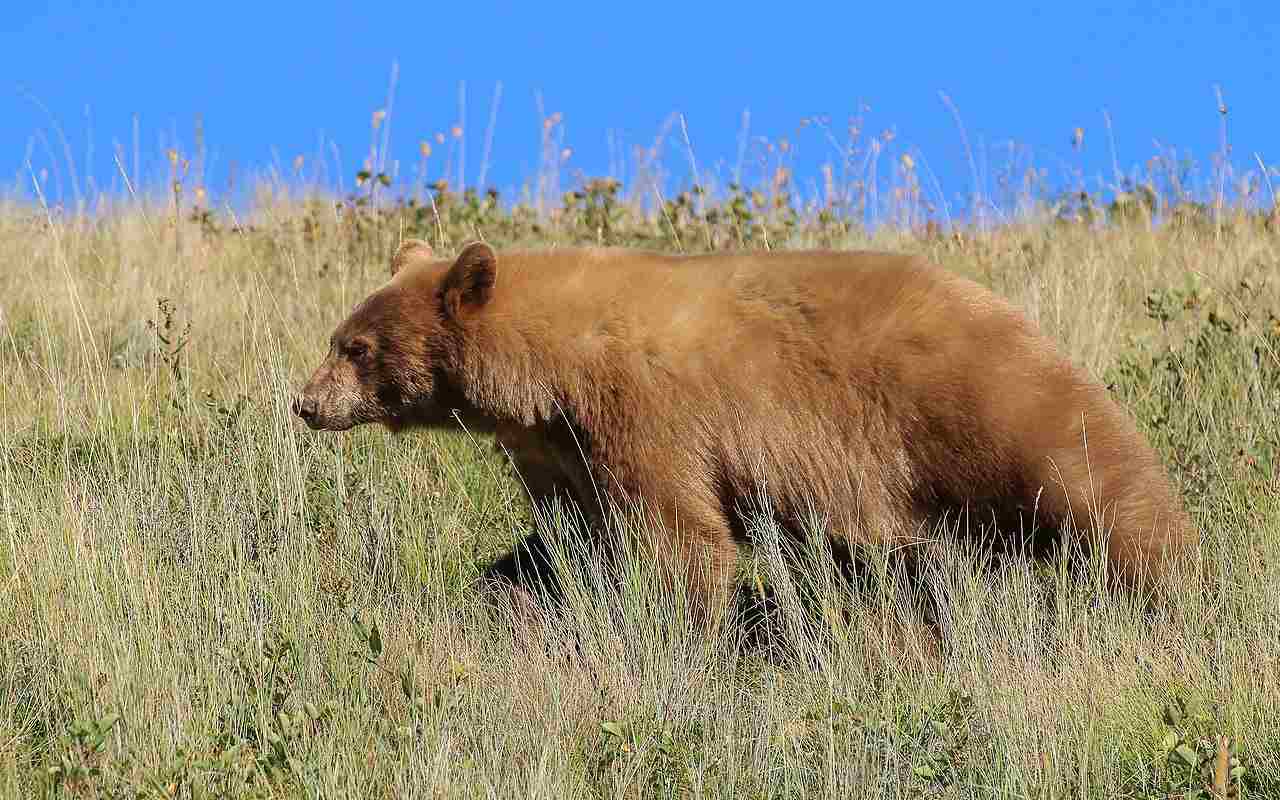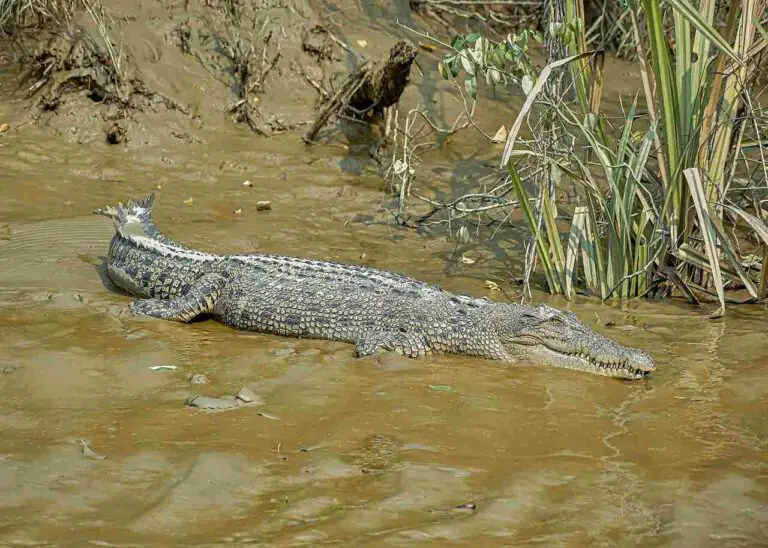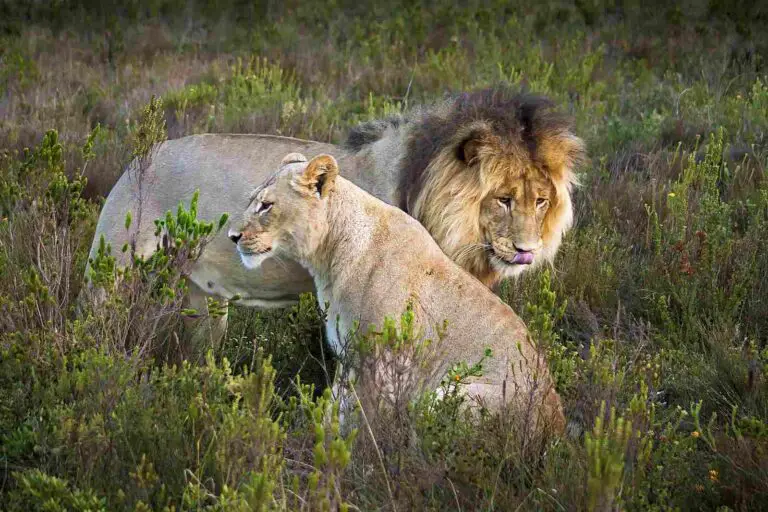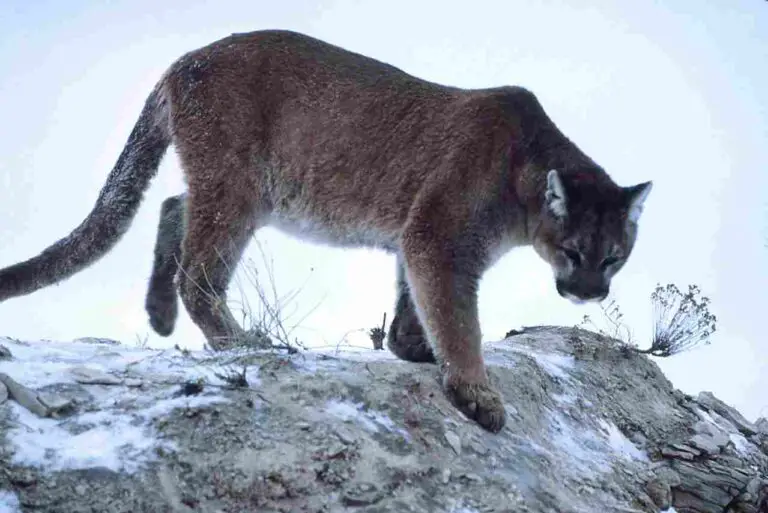Mountain Lion Vs Cheetah Size, Weight, Ecological Comparison
Mountain lions have a clear advantage over cheetahs in terms of size and weight. They are larger, heavier, and stronger, giving them a significant edge in a physical confrontation. Additionally, mountain lions are known to be more aggressive than cheetahs, further increasing their chances of winning a fight. Their more prominent claws and teeth also contribute to their predatory prowess.
Moreover, mountain lions possess a formidable bite force, which adds to their overall physical capacity. These factors, along with others discussed in this article, make a compelling case for why a mountain lion would triumph over a cheetah in a fight.
Reasons Why a Mountain Lion Will Win a Cheetah In a Fight/Physical Confrontation
I). Size and Weight Advantages
One of the main reasons why a mountain lion would win in a fight against a cheetah is its size and weight advantage. Mountain lions are significantly larger and heavier than cheetahs, giving them a greater physical presence and strength.
This size advantage allows mountain lions to overpower their opponents and dominate in a physical confrontation. With their larger bodies, mountain lions have more muscle mass and a stronger build, making them formidable predators.
II). Mountain Lions are More Aggressive Than Cheetahs
Another reason why a mountain lion would have the upper hand in a fight is their aggressive nature. Mountain lions are known to be more aggressive than cheetahs, which gives them a psychological advantage.
Their aggression combined with their size and strength makes them more likely to initiate and dominate a fight. Cheetahs, on the other hand, are more inclined to avoid conflict and prefer to rely on their speed and agility to escape from potential threats.
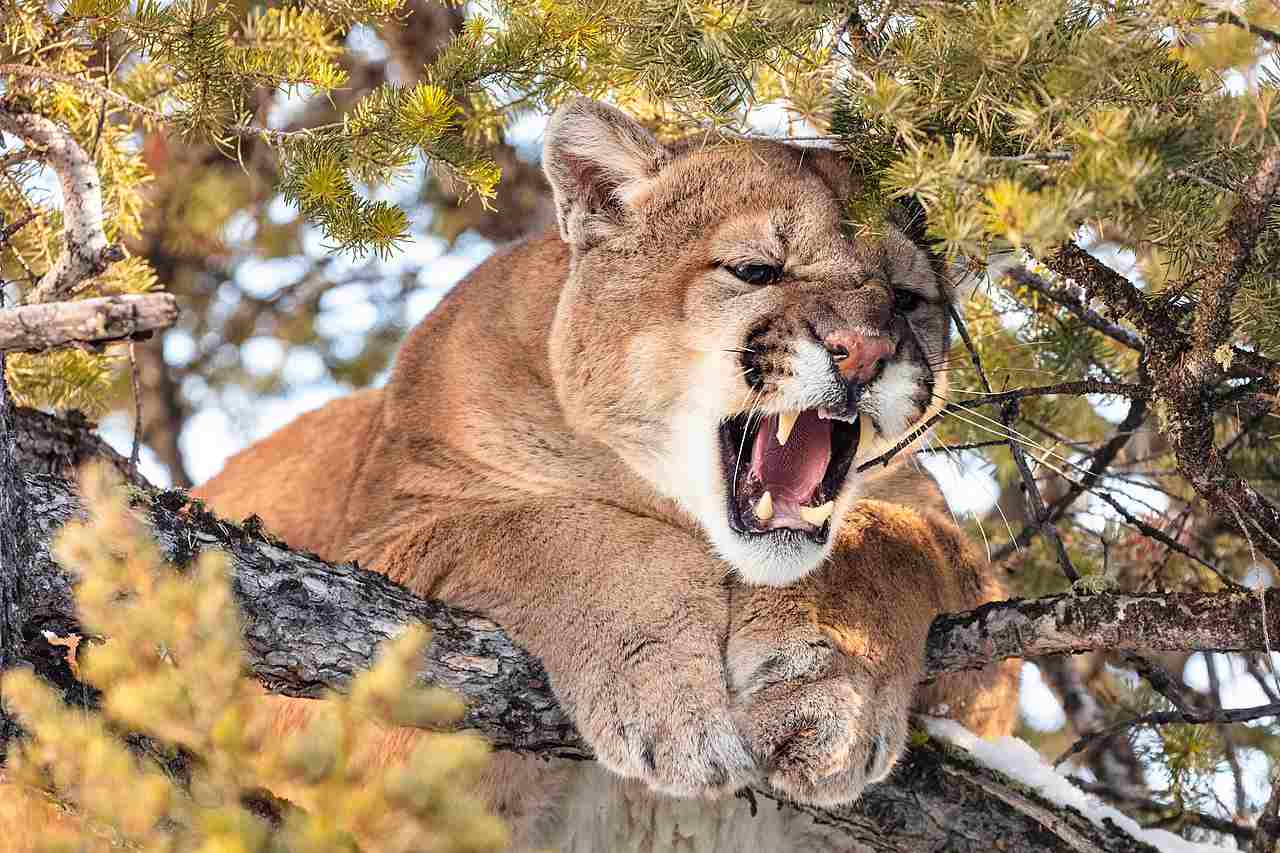
III). More-Prominent Claws and Teeth
Mountain lions possess more-prominent claws and teeth compared to cheetahs. Their sharp claws and powerful jaws are designed for hunting and killing prey.
In a fight, these weapons give mountain lions an advantage in inflicting serious injuries on their opponents. The larger size of their claws and teeth allows them to deliver more powerful and damaging strikes, increasing their chances of overpowering a cheetah.
IV). Formidable Bite Force
Mountain lions have a formidable bite force, which adds to their overall physical capacity. Their strong jaws and sharp teeth enable them to deliver powerful bites that can incapacitate their prey. In a fight with a cheetah, this bite force can be a decisive factor, allowing the mountain lion to inflict severe injuries and gain control over the situation.
Therefore, the size and weight advantages, along with the aggressive nature, more-prominent claws and teeth, and formidable bite force of mountain lions, give them a clear advantage over cheetahs in a fight or physical confrontation.
*Details of Comparison
|
Comparison Category
|
Mountain Lion | Cheetah |
| Size and Weight Advantages | Significantly larger and heavier. |
Smaller and lighter.
|
| Aggressiveness | More aggressive nature. |
Generally avoids conflict.
|
| Claws and Teeth | More prominent, powerful. |
Less prominent, adapted for speed.
|
| Bite Force | Formidable, around 600 psi. |
Weaker, ranging from 300 to 475 psi.
|
| Taxonomy | Felidae family, Puma genus. |
Felidae family, Acinonyx genus.
|
| Appearance | Stocky build, short fur for camouflage. |
Streamlined for speed, rosette coat pattern.
|
| Size | Total length 5 to 9 feet. |
Total length 3.5 to 4.5 feet.
|
| Weight | Males: 130 to 220 pounds; Females: 65 to 140 pounds. |
Males: 110 to 140 pounds; Females: 75 to 110 pounds.
|
| Speed and Agility | Up to 50 mph, agile. |
Up to 70 mph, renowned for speed.
|
| Habitat | Highly adaptable, diverse ecosystems. |
Primarily open grasslands and savannas.
|
| Lifespan | 8 to 13 years in the wild; Up to 20 in captivity. |
10 to 12 years in the wild; Up to 15 in captivity.
|
| Behavior | Solitary, opportunistic hunters. |
More social, living in small groups.
|
| Reproduction | Give birth to 1 to 6 cubs, blind and helpless. |
Give birth to 3 to 5 cubs, born with fur and sight.
|
| Danger Posed to Humans | More aggressive, higher potential for aggression. |
Generally avoids human contact.
|
| Intelligence | Problem-solving skills, adaptability. |
Specialized adaptations for hunting.
|
| Tracks | Large tracks with retractable claws. |
Smaller tracks with non-retractable claws.
|
| Conservation Status | Least concern, facing habitat loss. |
Vulnerable, threatened by habitat loss, poaching.
|
1). Taxonomy
The mountain lion, scientifically known as Puma concolor, belongs to the Felidae family and the Puma genus. On the other hand, the cheetah, scientifically known as Acinonyx jubatus, belongs to the Felidae family and the Acinonyx genus.
While both animals belong to the same family, their different genera highlight their distinct evolutionary paths. The mountain lion is more closely related to other big cats like the jaguar and the leopard, while the cheetah stands apart as a unique and specialized species.
In terms of physical characteristics, the mountain lion and the cheetah display notable differences. The mountain lion has a muscular build with a stocky appearance, while the cheetah has a slender and streamlined body. These differences in stature and build are adaptations that enable each species to excel in their respective habitats and hunting strategies.
2). Appearance
The appearance of both the mountain lion and the cheetah is distinct and adapted to their respective environments. Starting with their coats, the mountain lion has a dense and short fur that can vary in color from light brown to grayish-brown. This coloration helps them blend into their surroundings, providing effective camouflage while hunting or hiding from predators. On the other hand, the cheetah has a unique coat pattern with black spots on a golden or yellowish background. This pattern, known as rosettes, helps the cheetah blend into the grasslands and scrub habitats where it hunts.
In terms of stature and build, the mountain lion has a muscular and stocky appearance. They have strong forelimbs and hindlimbs, which enable them to climb trees and navigate rugged terrains with ease. In contrast, the cheetah has a slender and streamlined body, built for speed and agility. Their lightweight frame, long legs, and flexible spine allow them to reach incredible speeds in pursuit of prey.
When comparing the two animals, it is clear that their appearances have evolved to suit their specific ecological niches. The mountain lion’s camouflage and robust build make it well-suited for hunting in forests and mountainous regions, while the cheetah’s spotted coat and sleek physique enable it to excel in open grasslands where speed is crucial for capturing prey.
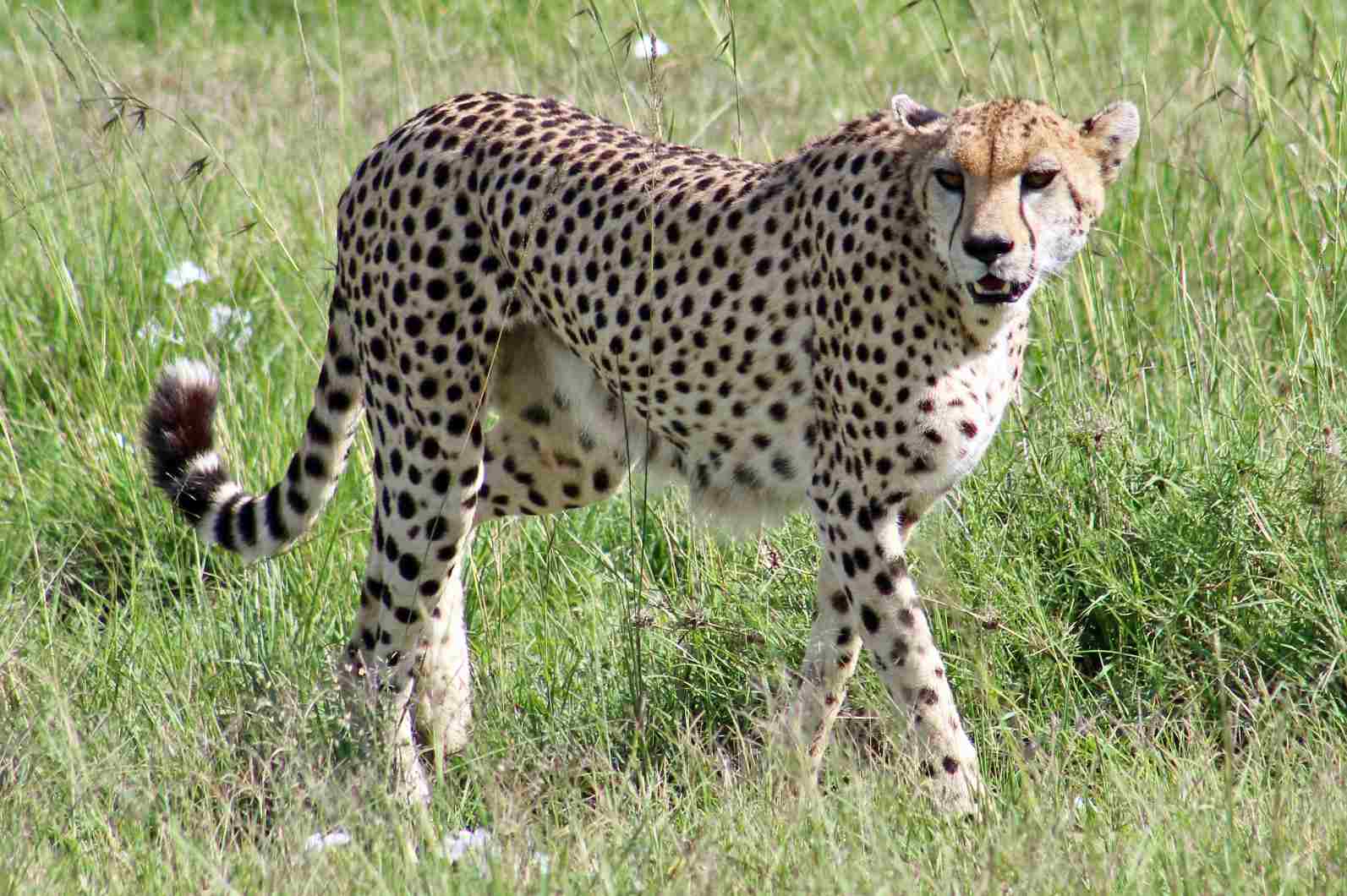
3). Size
The mountain lion, also known as the cougar or puma, is a large cat with a total body length ranging from 5 to 9 feet. They stand at a height of around 2.5 to 3 feet at the shoulders. On the other hand, the cheetah is slightly smaller in size. They have a total body length of about 3.5 to 4.5 feet and stand at a height of approximately 2.5 feet at the shoulders.
The mountain lion’s larger size gives it an advantage when it comes to hunting and taking down prey. With its powerful build and longer body, it has the ability to overpower larger animals and bring them down with ease. The cheetah, although smaller, compensates for its size with its incredible speed and agility. Its slender body allows it to reach speeds of up to 70 miles per hour, making it the fastest land animal.
In terms of size, the mountain lion clearly has the advantage in terms of sheer physical presence. However, the cheetah’s smaller size is a trade-off for its exceptional speed and maneuverability.
4). Weight
When comparing the weight of a mountain lion and a cheetah, it is clear that the mountain lion is the heavier of the two. Adult male mountain lions can weigh between 130 to 220 pounds, while adult females typically weigh between 65 to 140 pounds. On the other hand, cheetahs are much lighter in comparison. Adult male cheetahs weigh around 110 to 140 pounds, while adult females weigh between 75 to 110 pounds.
The mountain lion’s heavier weight gives it an advantage in terms of strength and power. With its larger size and muscular build, it has the ability to take down larger prey and exert more force when hunting. The cheetah, although lighter, compensates for its weight with its incredible speed and agility. Its lighter body allows it to accelerate quickly and make sharp turns while chasing down prey.
In terms of weight, the mountain lion clearly has the advantage in terms of sheer physical strength. However, the cheetah’s lighter weight is a trade-off for its exceptional speed and maneuverability.
5). Speed and Agility
When comparing the speed and agility of a mountain lion and a cheetah, it is evident that the cheetah surpasses the mountain lion in both aspects. The cheetah is renowned as the fastest land animal, capable of reaching speeds of up to 70 miles per hour in short bursts. Its slender body, long legs, and flexible spine contribute to its exceptional speed and agility, allowing it to swiftly chase down prey.
On the other hand, while the mountain lion is not as fast as the cheetah, it still possesses impressive speed and agility for its size. With bursts of speed reaching up to 50 miles per hour, the mountain lion can quickly close the gap between itself and its prey. Its muscular build and powerful hind legs enable it to make agile leaps and navigate through rugged terrain with ease.
In terms of speed and agility, the cheetah clearly outshines the mountain lion. Its unmatched acceleration and ability to change direction rapidly make it a formidable predator. However, the mountain lion’s combination of strength, agility, and speed allows it to excel in its own right, making it a formidable predator in its own habitat.
6). Bite Force
When comparing the bite force of a mountain lion and a cheetah, it is clear that the mountain lion possesses a stronger bite. The bite force of an animal is measured in pounds per square inch (psi), and the mountain lion has been recorded to have a bite force of around 600 psi. This powerful bite allows the mountain lion to effectively take down its prey, which often includes large ungulates such as deer.
On the other hand, the cheetah has a relatively weaker bite force compared to the mountain lion. It has been estimated that the cheetah’s bite force ranges from 300 to 475 psi. While this may seem low in comparison, it is important to note that the cheetah relies more on its speed and agility to catch and kill its prey rather than overpowering it with a strong bite.
Therefore, when it comes to bite force, the mountain lion has the advantage over the cheetah. Its powerful jaws and strong bite allow it to deliver a lethal bite to its prey, ensuring a successful kill.
7). Overall Physical Capacity (Which is Stronger?)
When comparing the overall physical capacity of a mountain lion and a cheetah, it is evident that the mountain lion holds the advantage due to its superior size, weight, and strength.
In terms of size, the mountain lion is larger than the cheetah. It can reach lengths of up to 8 feet and weigh between 100 to 200 pounds, making it a formidable predator. On the other hand, the cheetah is smaller, measuring around 4 to 5 feet in length and weighing between 75 to 140 pounds.
The mountain lion’s larger size gives it an edge in a physical confrontation. Its muscular build and powerful limbs allow it to overpower its prey and defend itself against potential threats. In contrast, the cheetah’s slender body and lightweight frame are optimized for speed and agility rather than brute strength.
In a violent confrontation between the two, the mountain lion’s size and strength would likely be the determining factor in the outcome. Its powerful jaws and strong bite force, as discussed in the previous section, would give it a significant advantage over the cheetah.
8). Habitat
Mountain lions are highly adaptable and can be found in a variety of habitats across North and South America. They are known to inhabit diverse environments such as forests, mountains, deserts, and even swamps. This adaptability allows them to thrive in different ecosystems, from the dense forests of the Pacific Northwest to the arid deserts of the Southwest.
On the other hand, cheetahs have a more limited geographic range and are primarily found in sub-Saharan Africa. They prefer open grasslands and savannas, where their incredible speed and agility can be fully utilized during hunting. These habitats provide the cheetah with the necessary space to sprint and chase down their prey, which mainly consists of fast-running ungulates like gazelles and impalas.
Therefore, while mountain lions have a broader habitat range, cheetahs are more specialized in their habitat preferences. The adaptability of mountain lions allows them to survive in various ecosystems, while cheetahs thrive in open grasslands and savannas where their speed and agility are advantageous for hunting.
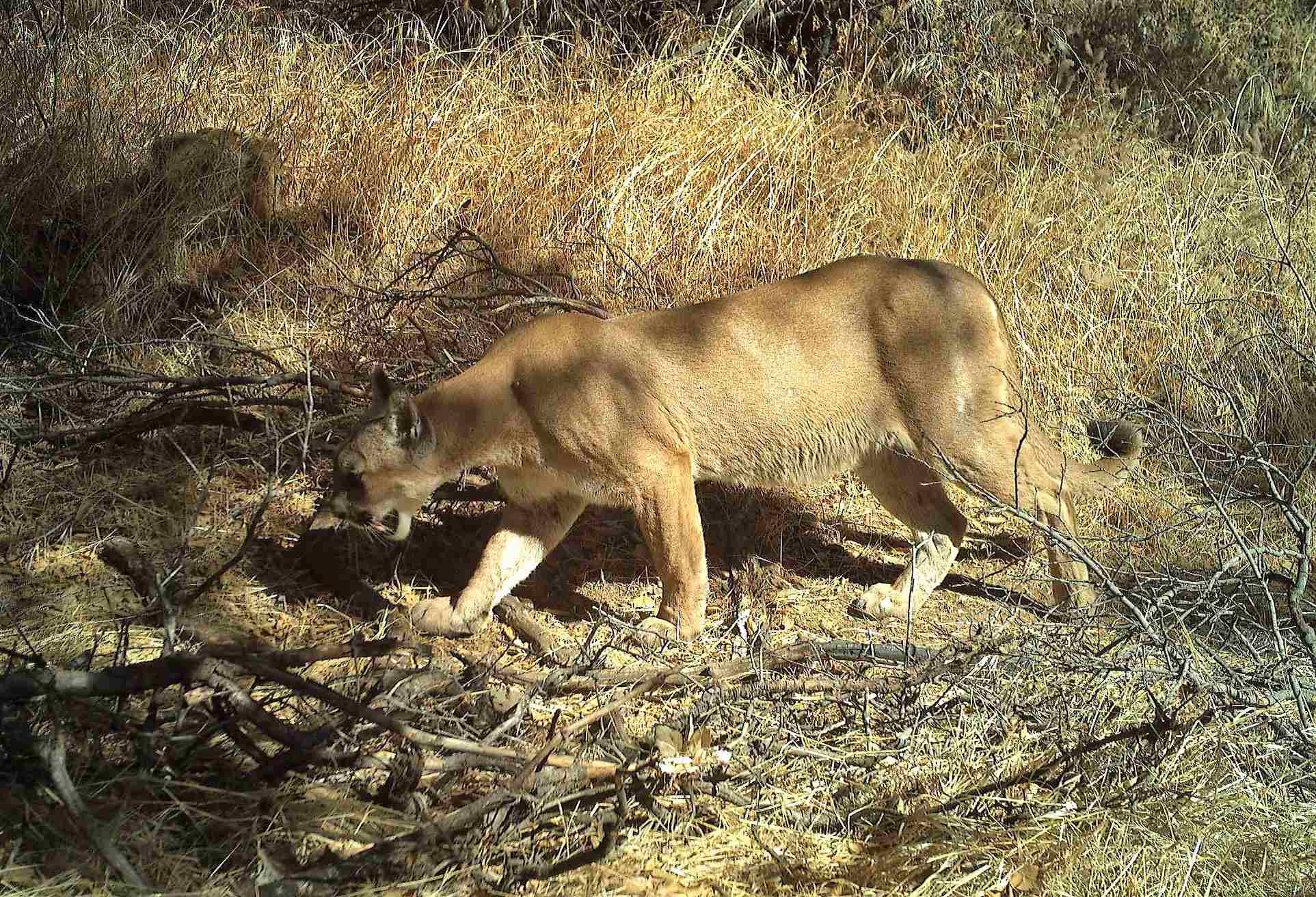
9). Lifespan
When comparing the lifespan of mountain lions and cheetahs, there are notable differences between the two species. Mountain lions, also known as cougars or pumas, have an average lifespan of around 8 to 13 years in the wild. However, in captivity, they can live up to 20 years or more.
On the other hand, cheetahs have a shorter lifespan compared to mountain lions. In the wild, cheetahs typically live for about 10 to 12 years. In captivity, where they are protected from predators and have access to regular veterinary care, cheetahs can live up to 15 years or more.
The difference in lifespan can be attributed to various factors. Mountain lions have a more diverse diet and are capable of hunting a wide range of prey, which provides them with a more stable food source. This, in turn, contributes to their longer lifespan. Cheetahs, on the other hand, have a more specialized diet and primarily rely on hunting fast-running ungulates. Their hunting strategy requires a high level of energy expenditure, which may impact their overall health and lifespan.
10). Behavior
Mountain lions are solitary animals, preferring to live and hunt alone. They are highly territorial and mark their territory with scent markings. Mountain lions are known for their stealthy hunting behavior, patiently stalking their prey before launching a powerful ambush. They are also known to be opportunistic feeders, capable of adapting their diet to the available prey in their habitat.
On the other hand, cheetahs are more social animals, often living in small groups or coalitions consisting of siblings or family members. They have a unique hunting behavior, relying on their incredible speed and agility to chase down their prey. Cheetahs are known for their distinctive vocalizations, including purring, growling, and hissing, which they use for communication with other cheetahs.
In terms of parenting, mountain lions are more involved in raising their young. Female mountain lions are responsible for raising the cubs, teaching them essential hunting and survival skills. Cheetahs, on the other hand, have a less involved parenting style, with the female cheetah typically raising the cubs on her own.
Generally, the behavior of mountain lions and cheetahs reflects their different ecological adaptations and lifestyles. Mountain lions’ solitary behavior and adaptability contribute to their success as apex predators, while cheetahs’ social behavior and specialized hunting strategy make them unique and fascinating animals in their own right.
11). Reproduction
Mountain lions and cheetahs have different reproductive strategies. Mountain lions are viviparous, meaning they give birth to live young. The gestation period for mountain lions is approximately 90 to 96 days. Female mountain lions typically give birth to a litter of one to six cubs, with an average litter size of two to three cubs. The cubs are born blind and helpless, relying on their mother for nourishment and protection.
On the other hand, cheetahs are also viviparous, giving birth to live young. The gestation period for cheetahs is approximately 90 to 95 days. Female cheetahs usually give birth to a litter of three to five cubs, with an average litter size of four cubs. Unlike mountain lion cubs, cheetah cubs are born with a mantle of fur and are able to see and walk shortly after birth.
When comparing the reproduction of mountain lions and cheetahs, it is clear that both species have similar reproductive strategies as viviparous animals. However, there are differences in litter size and the developmental stage of the cubs at birth. These differences reflect the unique ecological adaptations and survival strategies of each species.
Therefore, mountain lions and cheetahs both exhibit viviparous reproduction, but mountain lions have smaller litter sizes and less developed cubs at birth compared to cheetahs.
12). Danger Posed to Humans
Mountain lions and cheetahs both have the potential to come close to human settlements, but their behavior towards humans differs significantly. Mountain lions are known to be more aggressive towards humans compared to cheetahs. While cheetahs generally avoid human contact, mountain lions may occasionally enter residential areas in search of food or territory.
In terms of the rate of human deaths caused, mountain lions have been responsible for a higher number of fatal attacks on humans compared to cheetahs. However, it is important to note that such incidents are rare and occur only in specific circumstances where humans encroach upon their natural habitat or provoke them.
If you encounter a mountain lion or cheetah, it is crucial to take precautions to ensure your safety. In the case of a mountain lion, it is recommended to avoid running away, as this may trigger their predatory instincts. Instead, stand your ground, make yourself appear larger, and make loud noises to deter the mountain lion. For cheetah encounters, it is advised to slowly back away without turning your back on the animal.
When comparing the danger posed to humans by mountain lions and cheetahs, it is evident that mountain lions have a higher potential for aggression and pose a greater risk.
13). Intelligence
When comparing the intelligence of mountain lions and cheetahs, it is important to consider their respective behaviors and adaptations. Both animals exhibit intelligence in different ways, suited to their specific ecological needs.
Mountain lions, also known as cougars or pumas, are highly intelligent predators. They possess excellent problem-solving skills, which aid them in hunting and surviving in their diverse habitats. Mountain lions are known for their ability to stalk and ambush their prey, displaying strategic thinking and patience. Their intelligence is also evident in their ability to adapt to changing environments and find alternative food sources when necessary.
On the other hand, cheetahs are known for their incredible speed and agility rather than their intelligence. While they may not exhibit the same level of problem-solving skills as mountain lions, cheetahs possess specialized adaptations that make them highly efficient hunters. Their keen eyesight and ability to accelerate rapidly enable them to chase down prey with precision.
Therefore, both mountain lions and cheetahs possess unique forms of intelligence that are suited to their respective ecological roles. While mountain lions demonstrate problem-solving skills and adaptability, cheetahs showcase specialized adaptations for hunting.
14). Tracks
Mountain lion tracks are characterized by their large size and rounded shape. They have four toes with retractable claws, which are usually not visible in the track. The hind tracks are slightly larger than the front tracks, and the overall shape is similar to that of a domestic cat. The tracks of mountain lions often show clear imprints of the pads, which can help differentiate them from other large cats.
On the other hand, cheetah tracks are smaller and more elongated compared to those of mountain lions. They also have four toes, but their claws are non-retractable, which can be seen in the track. Cheetah tracks have a distinctive teardrop shape due to the presence of a prominent leading toe. This unique feature sets them apart from other big cats.
By examining the tracks left behind, experts can determine the presence of either a mountain lion or a cheetah in a particular area. These tracks provide valuable information about the movement and behavior of these animals in their respective habitats.
15). Conservation Status
The conservation status of mountain lions and cheetahs is a topic of concern due to the main threats to the survival of their wild populations. Both species face challenges that put them at risk of becoming endangered or threatened.
Mountain lions, also known as cougars or pumas, are currently listed as a species of least concern by the International Union for Conservation of Nature (IUCN). However, their populations are declining in certain regions due to habitat loss, fragmentation, and conflicts with humans. Human activities such as urbanization and the expansion of agriculture have resulted in the loss of suitable habitat for mountain lions, forcing them into smaller and more isolated areas.
Cheetahs, on the other hand, are listed as vulnerable by the IUCN. They have experienced a significant decline in their population primarily due to habitat loss, poaching, and human-wildlife conflict. Cheetahs require vast open spaces to thrive, but their habitats are being converted for agriculture and human settlements. Additionally, they are often targeted by poachers for their valuable skins.
Therefore, while mountain lions are currently considered a species of least concern, their populations are facing threats that require conservation efforts. Cheetahs, on the other hand, are already vulnerable and in need of urgent conservation measures to ensure their survival in the wild.
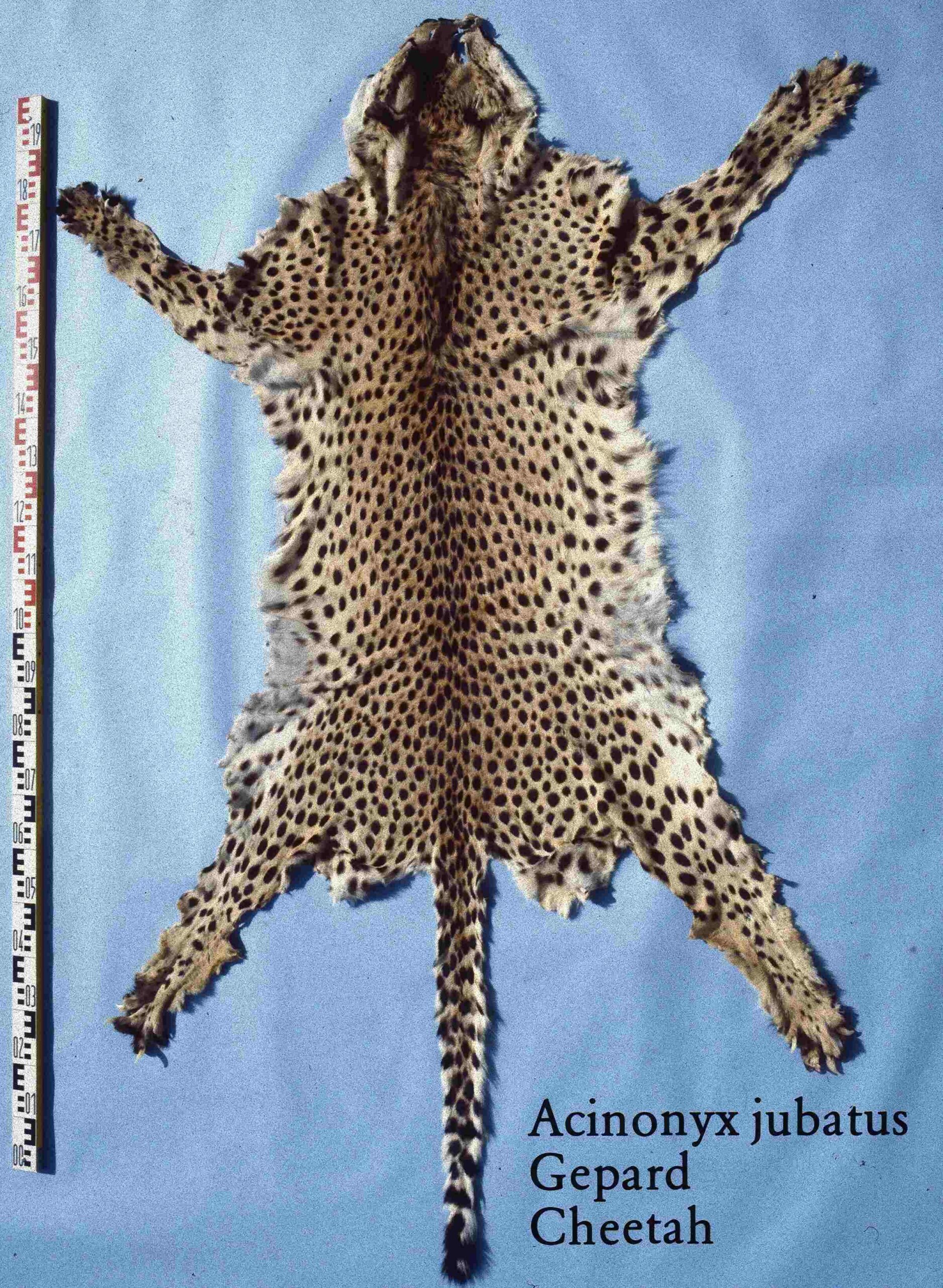
Conclusion
I). SIMILARITIES
In comparing mountain lions and cheetahs, several similarities can be observed. Both animals belong to the Felidae family and are known for their impressive physical abilities. They are both carnivorous predators, relying on their hunting skills to capture prey. Additionally, both species have adapted to their respective habitats, with sleek and muscular bodies that enable them to move swiftly and stealthily.
II). DIFFERENCES
Despite their similarities, there are notable differences between mountain lions and cheetahs. One significant difference lies in their physical characteristics. Mountain lions are larger and more robust, with a stockier build, while cheetahs are slender and built for speed. Another difference is their hunting strategy.
Mountain lions are ambush predators, relying on stealth and surprise to capture their prey, while cheetahs are known for their incredible speed, capable of reaching speeds up to 70 miles per hour in short bursts.
In terms of habitat, mountain lions are adaptable and can be found in a variety of ecosystems, including forests, deserts, and mountains. On the other hand, cheetahs are primarily found in open grasslands and savannas. Additionally, their conservation status differs, with mountain lions currently listed as a species of least concern, while cheetahs are classified as vulnerable.
Therefore, while mountain lions and cheetahs share some similarities, such as their membership in the Felidae family and their carnivorous nature, they also have distinct differences in terms of physical characteristics, hunting strategies, habitat preferences, and conservation status.
